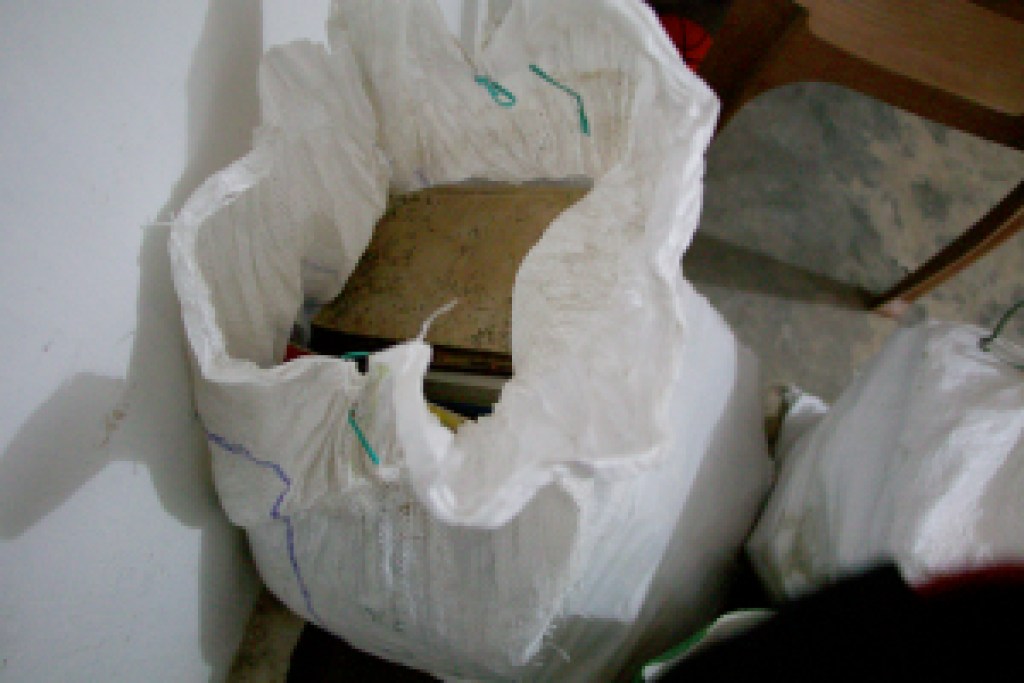As an Open Culture practitioner, I have often tried to create and use media licensed under Creative Commons (CC) Licenses. It is tricky in filmmaking since film production requires a massive media collection. For storytelling, a filmmaker relies on stock footage that might be copyrighted or use media under Fair use. I have been fortunate to make nine nonfiction open-culture films primarily using CC-licensed media and many Free/Libre and Open Source Software (F/LOSS). Two of my recent documentary film projects—”The Volunteer Archivists” and “Nani Ma“—cut across the areas of archiving of Public Domain text, recording linguistic oral history, use of open licenses and F/LOSS, and volunteerism.
“The Volunteer Archivists”: A film about a volunteer group’s 16-year-long journey of archiving 200 years of printing
Trailer of “The Volunteer Archivists” (Subhashish Panigrahi, CC BY-SA 4.0)
Srujanika was founded as a volunteer-led collective by scientist couple Nikhil Mohan Pattnaik and Puspashree Pattnaik in Bhubaneswar, Odisha, India, in 1983. Since 2006, its workforce of only a handful of volunteers has managed to collect, process, and archive 10,000 volumes of books, magazines, and other periodicals and dictionaries published in the Odia language since the early 1800s. These publications are hosted on their portal— Odia Bibhaba. Their story forms the basis of the documentary film “The Volunteer Archivists“.

Srujanika’s original goal was to promote science among children outside of textbooks. Public schools in Odisha, where Odia is an official language, saw a shortage of teachers and teaching aids, leaving little room for hands-on science experiments. Srujanika’s efforts helped create a large state-level community of students and teachers and a culture of science-making outside the classrooms. Students not only learned how to use everyday objects, from dry leaves to refills of ballpoint pens that would otherwise be thrown in a garbage can and learn what they are taught in science classes, but they also became mentors to their juniors. Srujanika also published a monthly magazine called “Bigyana Tarang” from 1988-1989, and many illustrated popular science publications for which they had to refer to existing science articles in Odia. Their own necessity pushed them to collect many rare books, magazines, dictionaries and other publications in Odia. As scanners became affordable, they started archiving, starting with the “Purnnachandra Ordia Bhashakosha“, the seven-volume 1930-1940 lexicon that powers the Odia Wiktionary. A text-based version of Bhashakosha is also available online thanks to the University of Chicago’s Digital Dictionaries of South Asia project, which was edited and proof-read by the Srujanika team.
Srujanika has also contributed to the Wikimedia movement, directly and indirectly, over the years. In 2021, the Odia Wikimedians User Group collaborated with them for a book archival project leading to the archiving of 101 titles. Their long-term contribution to localising computing terms into Odia and standardising their use, including the collaborative publication of the guide manual “Computer Translation Style & Convention Guide For Odia” has been helpful for the Wikimedia community for localisation of Wikimedia system messages. Similarly, their [pioneering work for solving encoding conversion of typed text in Odia was furthered by the Wikimedia community for building more robust converters that are now widely used for Wikimedia projects and also by the general public.
The 40-minute-long film, along with the main footage, b-rolls, stills and other supporting materials, was released under a Creative Commons Attribution-ShareAlike 4.0 International (CC BY-SA 4.0) License and a DVD version is available physically at the US Library of Congress. Watch the film here or browse the other materials here, many of which can also be used for Wikipedia articles and other Wikimedia projects.
“Nani Ma”: Documenting early 1900s register of Baleswari dialect of Odia
Released on the fifth anniversary of Musamoni Panigrahi, the late community elder and storyteller from Balasore district in the Indian state of Odisha, the documentary “Nani Ma” chronicles her stories and songs. It is also a massive speech data repository depicting the early 1900s register of the Baleswari dialect of the Odia language, which is hardly documented in the audiovisual medium.
The aftermath of the manmade 1866 famine of Orissa, stemming from the British Raj and the poor administration of local administrators, resulted in the death of over a million people. The grave impact of this tragedy got embedded in the folk songs, folklore, and folk literature of many generations. The central dialect of Odia became the focus of a linguistic revolution which would help create the state of Orissa in 1936 as India’s first state to be formed based on language. But this nationalistic movement and the literary initiatives left other dialects and many indigenous languages of the state unattended.
Born in the 1920s in a tiny coastal hamlet in the Balasore district of Orissa, Panigrahi never received formal schooling. Her early marriage also brought her early widowhood, a personal tragedy leading to her embracing Mahima Dharma, a faith system founded and led by indigenous and marginalized Adivasi and Dalit leaders. For the first time, narrations of her era and the linguistic register of that era are documented as multimedia recordings through this film.
The entire footage and supporting multimedia files used in “Nani Ma” are now available on the Internet Archive under a CC BY-SA 4.0 License, and the film will be available to the general public after screening in film festivals.
In addition to using openly-licensed media and releasing film media I owned under open licenses, both these films saw the use of several F/LOSS. I used Audacity for audio editing and codec conversions, HandBrake for video conversions, Inkscape and GIMP extensively for all image editing jobs, Scribus for typesetting documents such as the Electronic Press Kits, and typefaces from Google Fonts and other places that are available under Open Font License.
A version of this post was featured in the November 2022 issue of the GLAM-Wiki newsletter—”This Month In GLAM“.

Can you help us translate this article?
In order for this article to reach as many people as possible we would like your help. Can you translate this article to get the message out?
Start translation